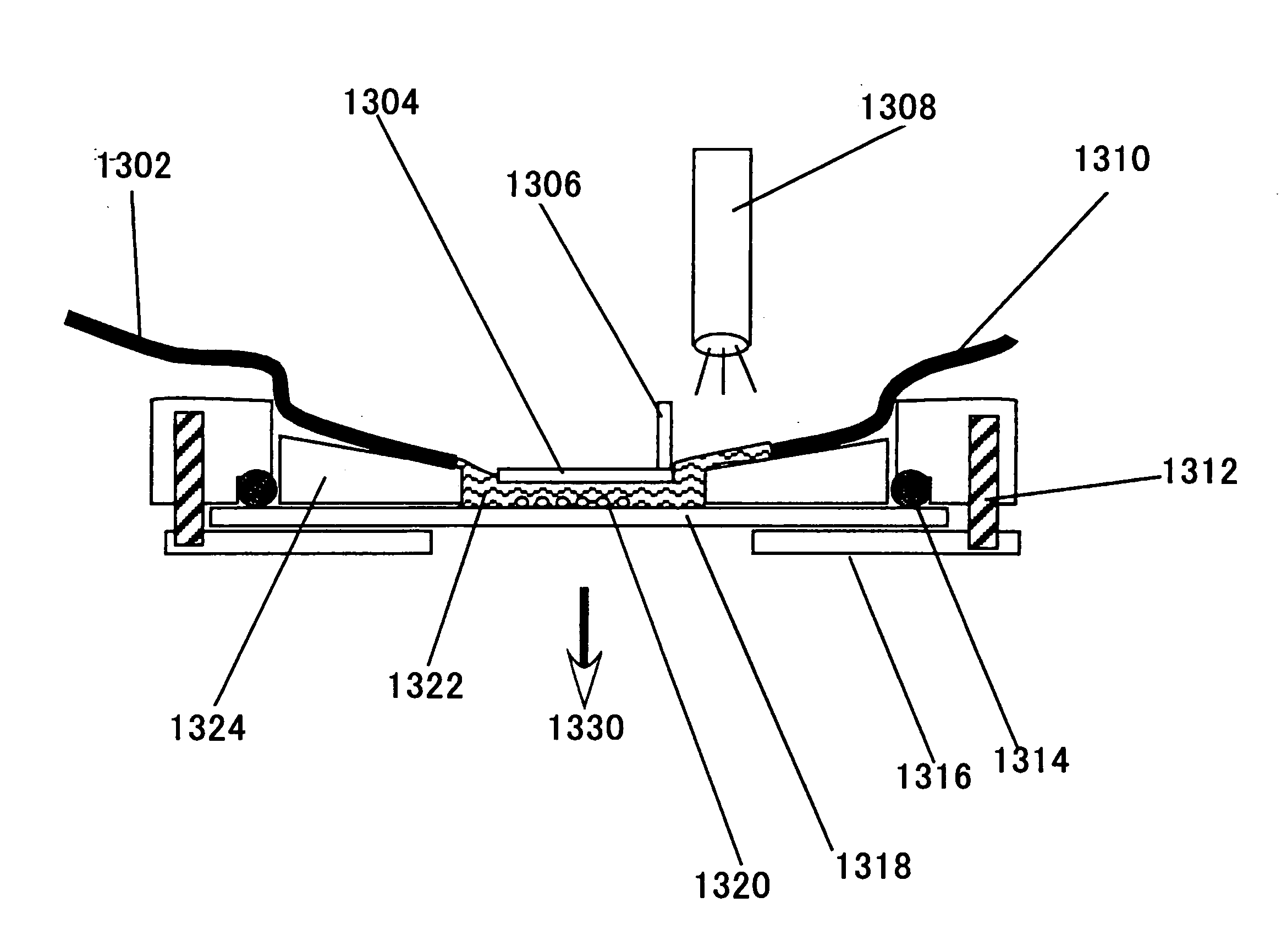Chemical sensor system
- Summary
- Abstract
- Description
- Claims
- Application Information
AI Technical Summary
Benefits of technology
Problems solved by technology
Method used
Image
Examples
example 1
Isolation of an Olfactory Receptor, an Example of a Chemical Receptor
[0824] In the present example, the isolation and functional analysis of an olfactory receptor as an exemplary example of chemical receptors was carried out. The procedures are described below. An exemplary chemical sensor was manufactured using such an isolated olfactory receptor as a typical chemical receptor.
(Olfactory Receptor Response Specificity to Odor Molecule)
[0825] It is reported that, in mice, the olfactory receptor is expressed is olfactory cells and detects and identifies odor molecules (Cell 96: 713-723 (1999) and the like). It is reported that there are four zones indicated by No. 1 to 4 in order from the dorsum to the ventral olfactory epithelium wherein olfactory cells are distributed and each olfactory receptor is limitedly expressed in any one of the four zones (Science 286 (5440): 706-711 (1999) and the like). As it is estimated by gene analysis estimates that there are about 1,000 types of o...
example 2
Olfactory System as a Sensation-Evaluation System
[0835] In the present example, it is described in detail that the sensation-evaluation system described above as an embodiment of the present invention is consistent with the olfactory system for identifying biological odor referring to FIGS. 6-8.
[0836] The odor molecules corresponding to the abbreviations used in FIGS. 6-8 are as follows: [0837] sCa(S(+)-carvone):S(+)-5-isopropenyl-2-methyl-2-cyclohexenon [0838] rCa(R(−)-carvone):R(−)-5-isopropenyl-2-methyl-2-cyclohexenon [0839] mn ((−)menthone):(2S,5R)-2-isopropyl-5-methylcyclohexanone [0840] pu(R(+)-pulegone):(R)-p-menth-4(8)-en-3-one [0841] ip(isopulegol):2-isopropenyl-5-methylcyclohexanol [0842] me(menthol):2-isopropyl-5-methylcyclohexanol [0843] lim(R(+)-limonene):(R)-1-methyl-4-(1-methylethyl)-cyclohexene [0844] am(isoamyl acetate):3-methylbutylacetate [0845] va(vanillin):4-hydroxy-3-methoxybenzaldehyde [0846] ova(o-vanillin):3-methyoxysalicylaldehyde [0847] ge(geraniol):3,7-...
example 3
Manufacture of Chips for Sensors
[0874] Formulations below were prepared in the present Example.
[0875] (Cellular Adhesion Factors)
[0876] As candidates for a cellular adhesion molecule, various extracellular matrix proteins and variants or fragments thereof were prepared. The materials prepared in the present Example are as follows. Cellular adhesion factors used were commercially available. [0877] 1) ProNectin F (Sanyo Chemical Industries, Kyoto, Japan); [0878] 2) ProNectin L (Sanyo Chemical Industries); [0879] 3) ProNectin Plus (Sanyo Chemical Industries); [0880] 4) gelatin.
[0881] Plasmids were prepared as DNA for transfection. Plasmids, pEGFP-N1 and pDsRed2-N1 (both from BD Biosciences, Clontech, CA, USA) were used. In these plasmids, gene expression was under the control of cytomegalovirus (CMV) promoters. The plasmid DNA was amplified in E. coli (XL1 blue, Stratgene, TX, USA) and the amplified plasmid DNA was used as a complex partner. The DNA was dissolved in distilled water...
PUM
| Property | Measurement | Unit |
|---|---|---|
| Length | aaaaa | aaaaa |
| Fraction | aaaaa | aaaaa |
| Speed | aaaaa | aaaaa |
Abstract
Description
Claims
Application Information
 Login to View More
Login to View More - R&D
- Intellectual Property
- Life Sciences
- Materials
- Tech Scout
- Unparalleled Data Quality
- Higher Quality Content
- 60% Fewer Hallucinations
Browse by: Latest US Patents, China's latest patents, Technical Efficacy Thesaurus, Application Domain, Technology Topic, Popular Technical Reports.
© 2025 PatSnap. All rights reserved.Legal|Privacy policy|Modern Slavery Act Transparency Statement|Sitemap|About US| Contact US: help@patsnap.com



